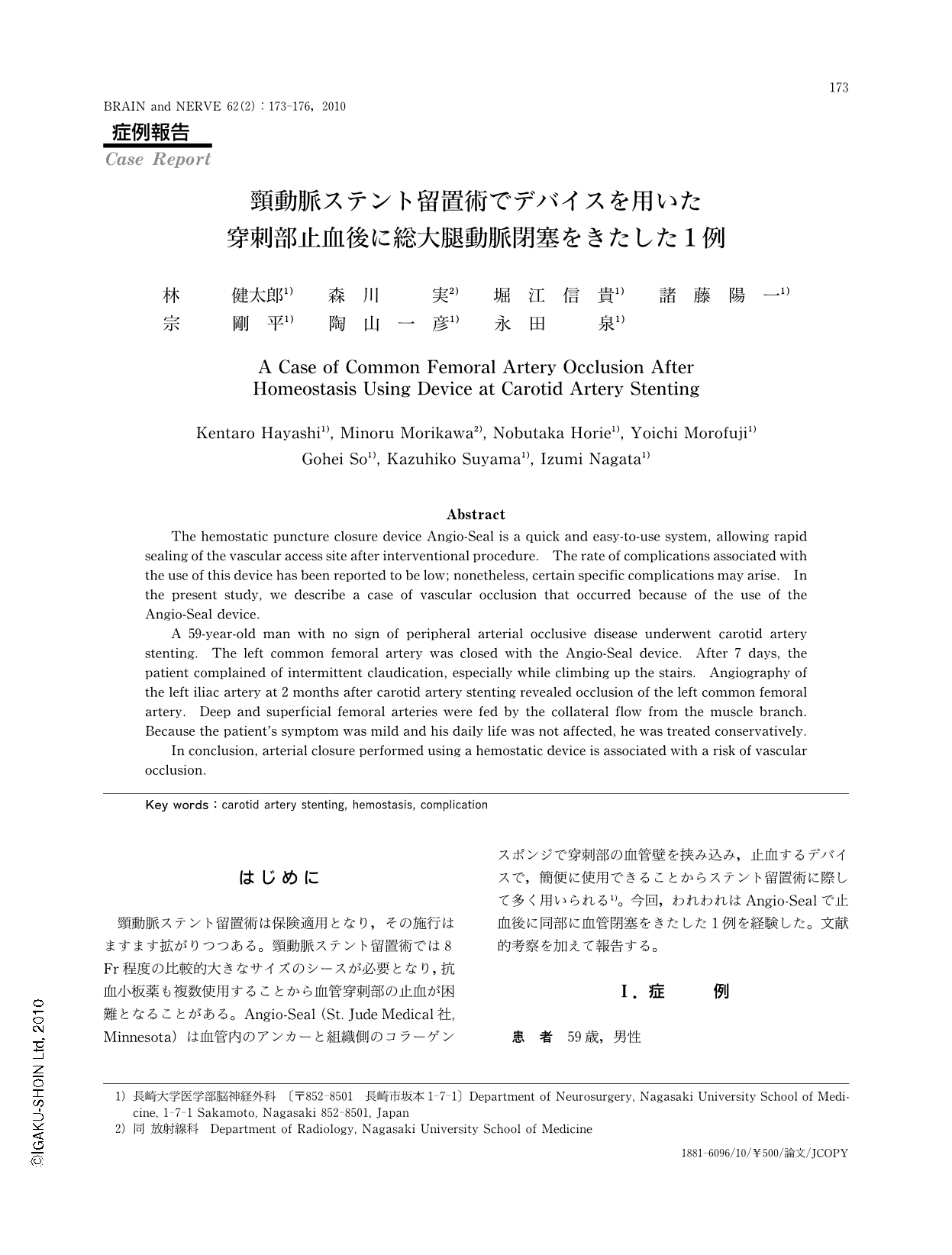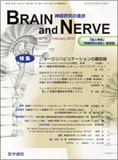Japanese
English
- 有料閲覧
- Abstract 文献概要
- 1ページ目 Look Inside
- 参考文献 Reference
はじめに
頸動脈ステント留置術は保険適用となり,その施行はますます拡がりつつある。頸動脈ステント留置術では8Fr程度の比較的大きなサイズのシースが必要となり,抗血小板薬も複数使用することから血管穿刺部の止血が困難となることがある。Angio-Seal(St. Jude Medical社, Minnesota)は血管内のアンカーと組織側のコラーゲンスポンジで穿刺部の血管壁を挟み込み,止血するデバイスで,簡便に使用できることからステント留置術に際して多く用いられる1)。今回,われわれはAngio-Sealで止血後に同部に血管閉塞をきたした1例を経験した。文献的考察を加えて報告する。
Abstract
The hemostatic puncture closure device Angio-Seal is a quick and easy-to-use system, allowing rapid sealing of the vascular access site after interventional procedure. The rate of complications associated with the use of this device has been reported to be low; nonetheless, certain specific complications may arise. In the present study, we describe a case of vascular occlusion that occurred because of the use of the Angio-Seal device.
A 59-year-old man with no sign of peripheral arterial occlusive disease underwent carotid artery stenting. The left common femoral artery was closed with the Angio-Seal device. After 7 days, the patient complained of intermittent claudication, especially while climbing up the stairs. Angiography of the left iliac artery at 2 months after carotid artery stenting revealed occlusion of the left common femoral artery. Deep and superficial femoral arteries were fed by the collateral flow from the muscle branch. Because the patient's symptom was mild and his daily life was not affected, he was treated conservatively.
In conclusion,arterial closure performed using a hemostatic device is associated with a risk of vascular occlusion.

Copyright © 2010, Igaku-Shoin Ltd. All rights reserved.


